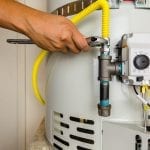Steps to Prolong the Lifespan of Your Home's Hot Water System By MaintenanceEffective Techniques for Caring for Your Home's Hot Water System
Steps to Prolong the Lifespan of Your Home's Hot Water System By MaintenanceEffective Techniques for Caring for Your Home's Hot Water System
Blog Article
Were you searching for help and advice about How to Maintain a Hot Water Heater in a Few Simple Steps?

Warm water is necessary for daily comfort, whether it's for a rejuvenating shower or cleaning dishes. To ensure your hot water system runs successfully and lasts much longer, regular maintenance is crucial. This post supplies sensible tips and understandings on exactly how to keep your home's warm water system to stay clear of disturbances and pricey fixings.
Intro
Maintaining your home's warm water system could seem complicated, yet with a few basic actions, you can guarantee it operates smoothly for several years to come. This overview covers every little thing from understanding your warm water system to do it yourself maintenance ideas and recognizing when to employ expert assistance.
Significance of Preserving Your Hot Water System
Regular maintenance not just extends the life expectancy of your hot water system however likewise guarantees it runs successfully. Neglecting maintenance can cause lowered efficiency, greater energy expenses, and even premature failing of the system.
Indicators Your Warm Water System Demands Upkeep
Knowing when your warm water system requires focus can protect against significant concerns. Keep an eye out for signs such as inconsistent water temperature, strange noises from the heating unit, or rusty water.
Flushing the Water Heater
Flushing your water heater eliminates sediment accumulation, enhancing effectiveness and extending its life.
Checking and Replacing Anode Rods
Anode rods avoid corrosion inside the tank. Inspecting and replacing them when worn out is essential.
Complicated Problems Requiring Professional Help
Examples include major leaks, electrical problems, or if your hot water heater is consistently underperforming.
Regular Specialist Upkeep Perks
Expert maintenance can include extensive inspections, tune-ups, and ensuring compliance with safety and security standards.
Inspecting and Adjusting Temperature Level Settings
Changing the temperature settings ensures ideal performance and safety.
DIY Tips for Maintenance
You can execute numerous upkeep tasks yourself to maintain your hot water system in top condition.
Checking for Leakages
Frequently examine pipes and links for leakages, as these can result in water damage and greater expenses.
Comprehending Your Warm Water System
Prior to diving right into upkeep jobs, it's handy to recognize the standard parts of your warm water system. Commonly, this consists of the hot water heater itself, pipelines, anode poles, and temperature level controls.
Month-to-month Upkeep Tasks
Normal month-to-month checks can aid capture small concerns prior to they rise.
Checking Pressure Relief Valves
Testing the stress relief valve guarantees it works correctly and stops excessive stress accumulation.
Shielding Pipelines
Insulating warm water pipes minimizes heat loss and can save power.
When to Call an Expert
While do it yourself maintenance is beneficial, some problems require specialist knowledge.
Final thought
Regular upkeep of your home's hot water system is necessary for efficiency, longevity, and price savings. By adhering to these suggestions and understanding when to look for expert assistance, you can make sure a trusted supply of hot water without unexpected interruptions.
How to Maintain an Instant Hot Water Heater
Before tinkering with your hot water heater, make sure that it’s not powered on. You also have to turn off the main circuit breaker and shut off the main gas line to prevent accidents. Also turn off the water valves connected to your unit to prevent water from flowing into and out of the appliance. 2. When you’re done, you have to detach the purge valves’ caps. These look like the letter “T” and are situated on either side of the water valves. Doing so will release any pressure that has accumulated inside the valves while at the same time avoid hot water from shooting out and burning your skin. 3. When the purge valves’ caps are removed, you have to connect your hosing lines to the valves. Your unit should have come with three hoses but if it didn’t, you can purchase these things from any hardware or home repair shops. You can also get them from retail stores that sell water heating systems. Read the user’s manual and follow it to complete this task properly. When the hosing lines are connected, open the purge port’s valves. 4. You should never use harsh chemical cleaners or solutions when cleaning your unit. Make use of white vinegar instead. It should be undiluted and you’ll probably use about 2 gallons. 5. Now flush your water heater. This task should probably take about 40 minutes. We can’t give you specific directions for this because the procedure is carried out depending on the type, model and brand of your heater. With that being said, refer to the user’s manual. 6. When you’re done draining the unit, you have to turn off the purge port valves again. Remove the hosing lines that you earlier installed on each of the water valves. Put the valve caps (purge port) back in their respective places and be very careful so as not to damage the rubber discs that are found inside these caps. 7. Now that everything’s back in place, check your user’s manual again to find out how to reactivate your water heating system. 8. Once it is working, turn one of your hot water faucets on just to let air pass through the heater’s water supply pipes. Leave the tap on until water flows smoothly out of it. https://www.orrplumbing.com/blog/2014/september/how-to-maintain-an-instant-hot-water-heater/

Hopefully you liked our piece about Tips For Maintaining Your Hot Water Heater. Thank you for taking time to browse our post. Sharing is good. Helping others is fun. I am grateful for being here. Kindly come visit our website back soon.
Rates Report this page